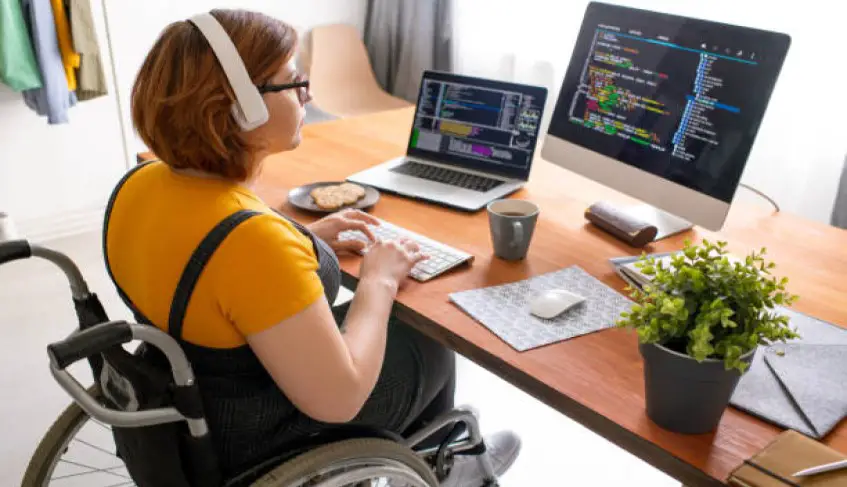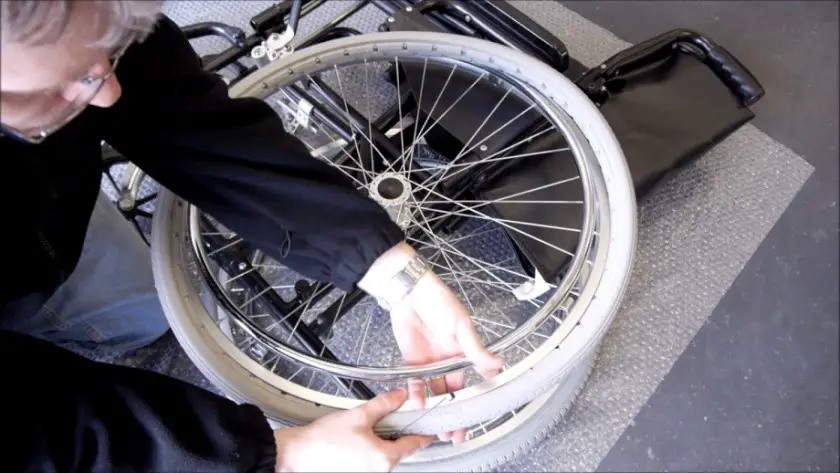Working while having a disability can have so many negative effects on your health.
To reduce the stress you’ll have to face to pay your bills and cater for your medications, you’ll be entitled to a disability living allowance.
You’d be entitled to this allowance if you continue to meet up with the disability qualifications and other terms and conditions.
However, for some reason, you may also want to seek a job or continue with your job even after applying for a disability living allowance.
You can always earn a living while having a disability provided you have the approval of your doctor and you have the needed aids that will help you execute the job.
While working, you might want to be careful not to lose your eligibility in receiving your allowance.
There are limitations placed on the number of hours you are allowed to work while receiving your allowance. These limitations start applying after your trial work period.
Table of Contents
- Trial Work Period
- Post-Trial Work Period
- Here’s How Many Hours You Can Work on a Disability
- Effects of Your Earnings on Your Disability Living Allowance
- Conditions to Earn a Substantial Income and Also Receive a Disability Living Allowance
- What Happens When You Lose Your Job
- Where to Seek Help
Trial Work Period
The trial work period is a period where you will be allowed to work without restrictions on the number of hours you can work or earnings you can make. The main aim of this period is to determine if you can work and earn a living.
During this period, you will be entitled to your disability living allowance, regardless of how much you earn. The trial period is 9 months and it is cumulative within a space of 60 months.
Related: How to Get Disability Benefits for Scoliosis
Post-Trial Work Period
You can continue to work while receiving a disability living allowance after the trial work period. But this time, for 36 months. During this period, your income is monitored and is expected not to exceed a particular amount that will be deemed substantial.
This amount is not constant and can vary from year to year.
The criteria for determining if your income is substantial or not isn’t the same for everyone. Some deductions can be made on your earnings before they are evaluated to know if the income is substantial.
These deductions include money you spent on services or equipment you need to execute your work smoothly. They include special cabs or buses, special equipment or tools for working, mobility aids, personal assistant(s), counseling fees, and medical services.
The benchmark for your substantial earnings will increase each year.
Here’s How Many Hours You Can Work on a Disability

Your income is mostly a major determinant in deciding if you will continue receiving your disability living allowance. But when your hourly wage can’t be easily measured, then the number of hours you work and your monthly salary will become the determinants.
This is usually the case when you own a business or you’re managing someone’s business.
You can work up to 45 hours a month, which is about 2 hours per day, assuming 20 working days in a month. While working within the permissible number of working hours, you also must not exceed the benchmark that indicates a substantial income.
If you default on any of the two conditions listed above, you might be disqualified from receiving your allowance.
Related: How to Score Headache Disability Index
Effects of Your Earnings on Your Disability Living Allowance
It’s important to know that your earnings can affect how much you receive as your allowance.
When your income increases, your allowance will reduce. And when your income increases to a substantial amount, then your allowance will cease completely. It’s important to report any increase or drop in your income to your local Social Security office.
If the increase in your income is to meet your special needs in executing your job (such as transport fare allowance), indicate it in your report so that it won’t be counted as an increase.
Conditions to Earn a Substantial Income and Also Receive a Disability Living Allowance

It’s possible to earn a substantial income and also receive your disability living allowance. This can happen if you’re setting aside a part of your income to execute a plan and the remaining balance won’t be enough to meet your needs.
You can set some money aside from your income to set up a business or undergo some training that will reduce your dependency on your disability allowance in the long run.
However, before making such a move, you should make your intention known through writing to the social security administrators and waiting for approval. You can also visit the local social security office to begin your application.
In your application, state the steps you’ll be using in accomplishing your goal. Also, state the amount you will be setting aside each month and the duration of your savings. Your allowance may even be increased if you will be needing more money to sustain yourself during this period.
You may decide to quit or change your plans along the line. In such circumstances, you have to visit your local social security office and inform them of your change in plans. If you’re quitting your plan, then the part of your income you’ve been setting aside for your plan will start counting and the initial rules on your earning will begin to apply.
If you don’t notify your local social security office immediately after you quit your plan, then you will have to repay the extra allowance you’ve been receiving since you stopped saving towards your goal.
Related: How to Change Your Address with Social Security Disability
What Happens When You Lose Your Job
There is a probability that you might lose your job either during the trial work period or the 36-month extended period. You have nothing to worry about if this happens. You’ll continue to receive your disability living allowance.
Also, if you lose your job during the 36-month extended period, you’ll start receiving your allowance again, supposing your allowance was discontinued because you were earning a substantial amount. You only have to contact the administrators and inform them that you’ve lost your job.
Due to your health condition, you may have to quit your job. It won’t stop you from receiving your allowance. If you make your request less than 5 years after you stopped receiving your allowance, then you won’t have to pass through the process of reapplying and waiting before you continue to receive your allowance.
Where to Seek Help
If you’re worried about losing the right to your benefits, you should seek the services of a social security disability attorney. The attorney will help to explain the complex procedures and the terms and conditions attached to receiving a disability allowance. You’ll also get to file your applications and appeal your cases when necessary.
Even though the services of a disability attorney may incur some charges, it’s worth the benefits you’ll receive.




